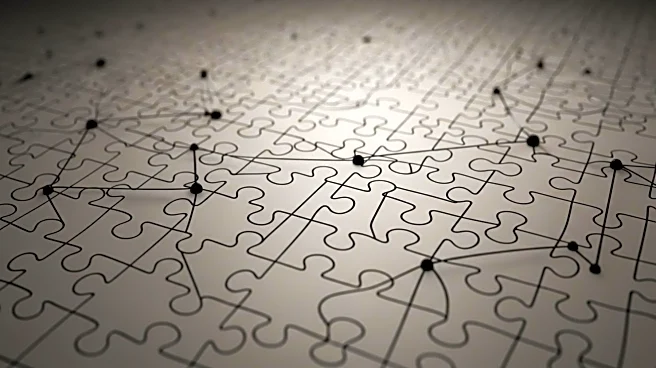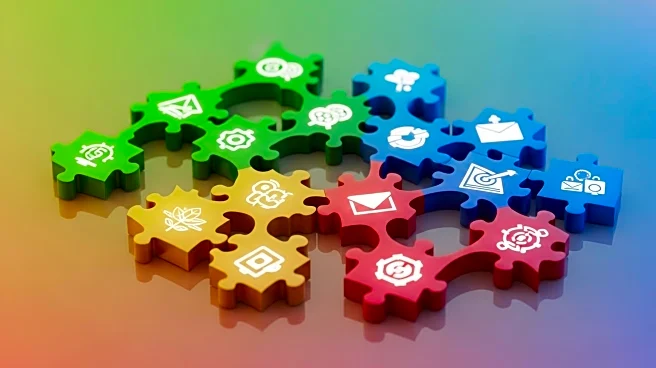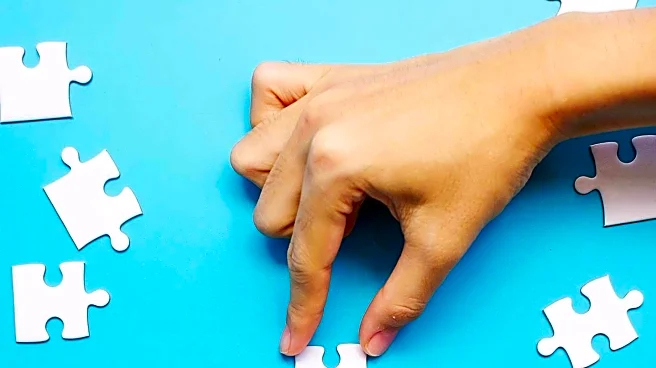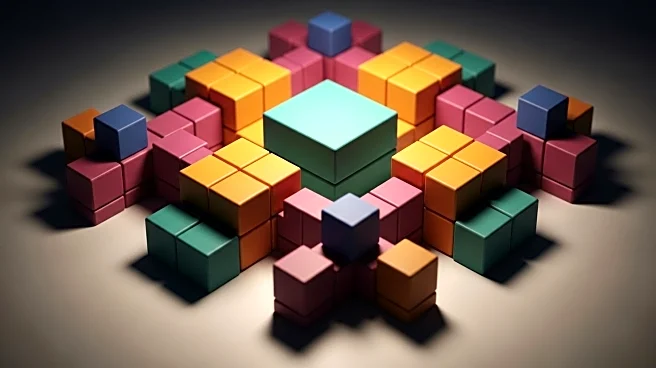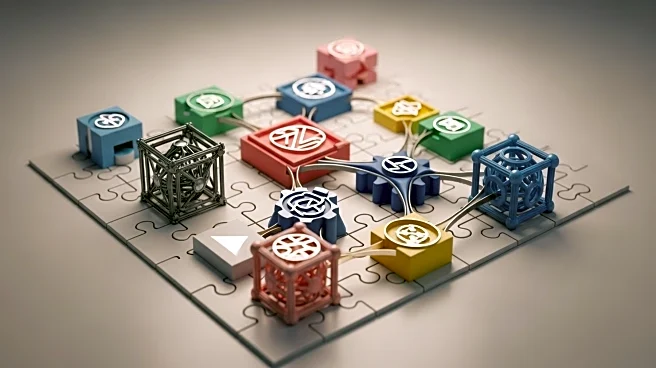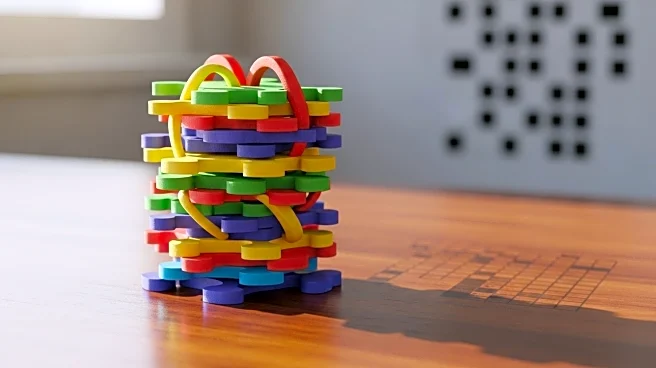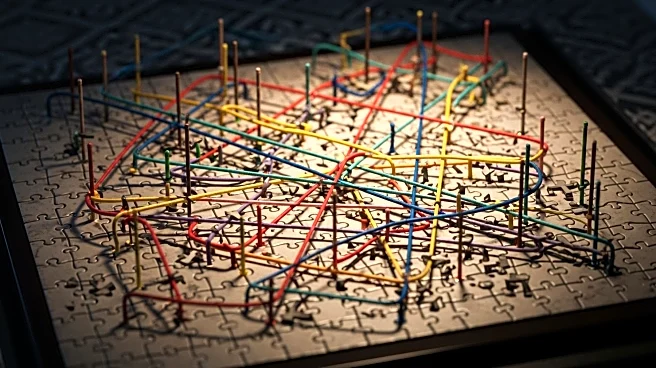What's Happening?
The New York Times has released its latest Connections puzzle, number 855, for October 13, 2025. This puzzle challenges players to identify thematic connections among groups of words, with each group consisting of four words. The categories for this puzzle include metaphors for potentially volatile situations, bar events, words after a welcome departure, and phrases related to scamming. The puzzle encourages players to think critically about language and cultural references, with hints provided to guide them through the process. The game, which first launched in June 2023, has gained popularity for its engaging format and educational value.
Why It's Important?
The Connections puzzle by the New York Times serves as a tool for enhancing linguistic and cultural understanding. By engaging with the puzzle, players can improve their vocabulary and comprehension of idiomatic expressions. This type of game also fosters critical thinking and problem-solving skills, which are valuable in both personal and professional contexts. Additionally, the puzzle reflects broader cultural themes and societal norms, offering insights into how language evolves and is used in different settings. As such, it contributes to the ongoing discourse on language and its role in shaping human interaction.
What's Next?
As the Connections puzzle continues to attract a growing audience, it is likely that the New York Times will expand its offerings to include more diverse and challenging categories. This could involve incorporating more complex linguistic themes or exploring cultural references from different regions. The puzzle's success may also inspire other media outlets to develop similar games, further promoting language learning and cultural literacy. Additionally, feedback from players could lead to refinements in the puzzle's design, enhancing its educational impact and entertainment value.
Beyond the Headlines
The Connections puzzle highlights the importance of language as a cultural artifact. It underscores how idiomatic expressions and metaphors can reveal societal values and historical contexts. By engaging with these puzzles, players not only enhance their language skills but also gain a deeper appreciation for the nuances of communication. This can lead to greater empathy and understanding across different cultural backgrounds, fostering a more inclusive and interconnected society.
